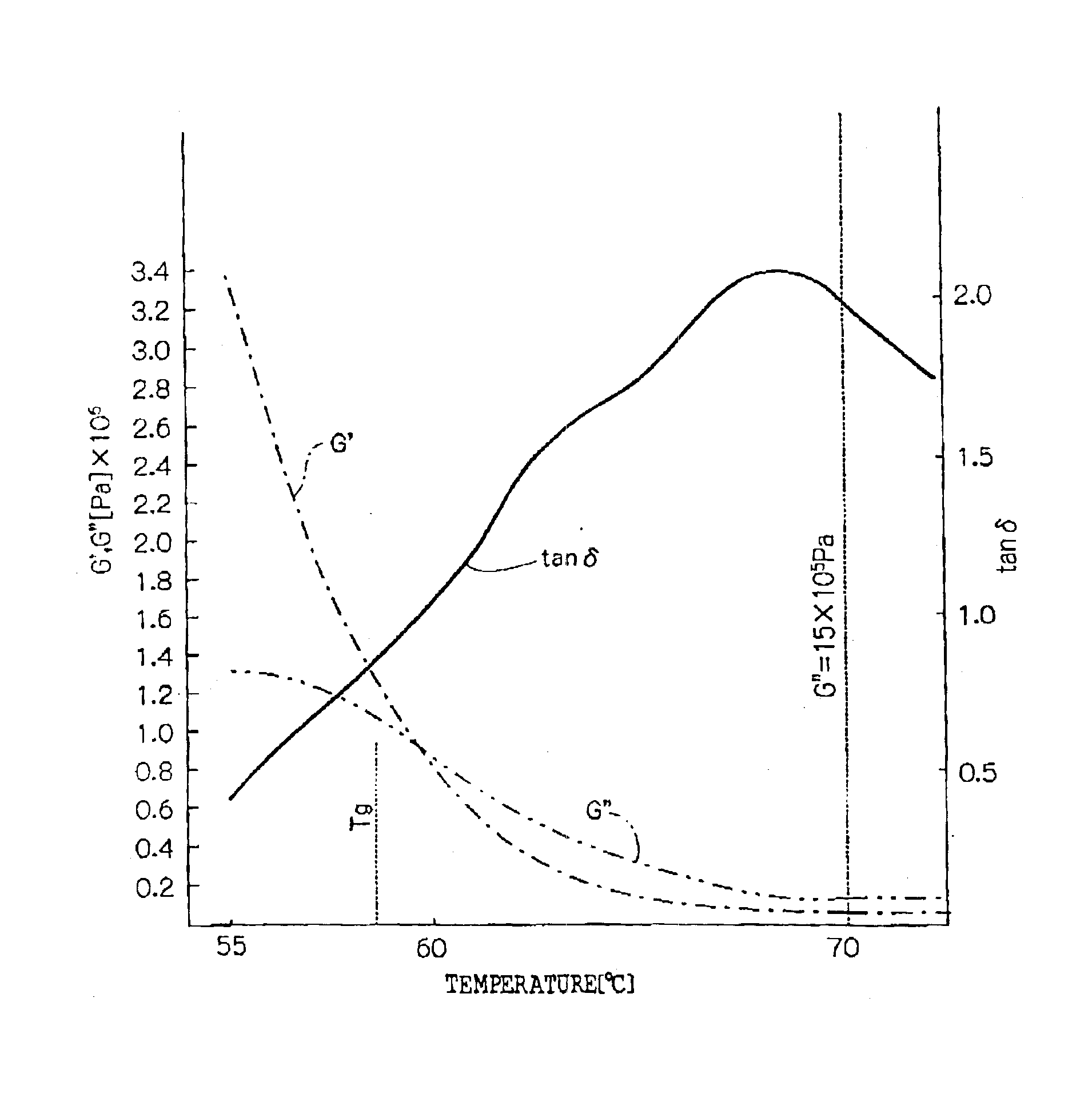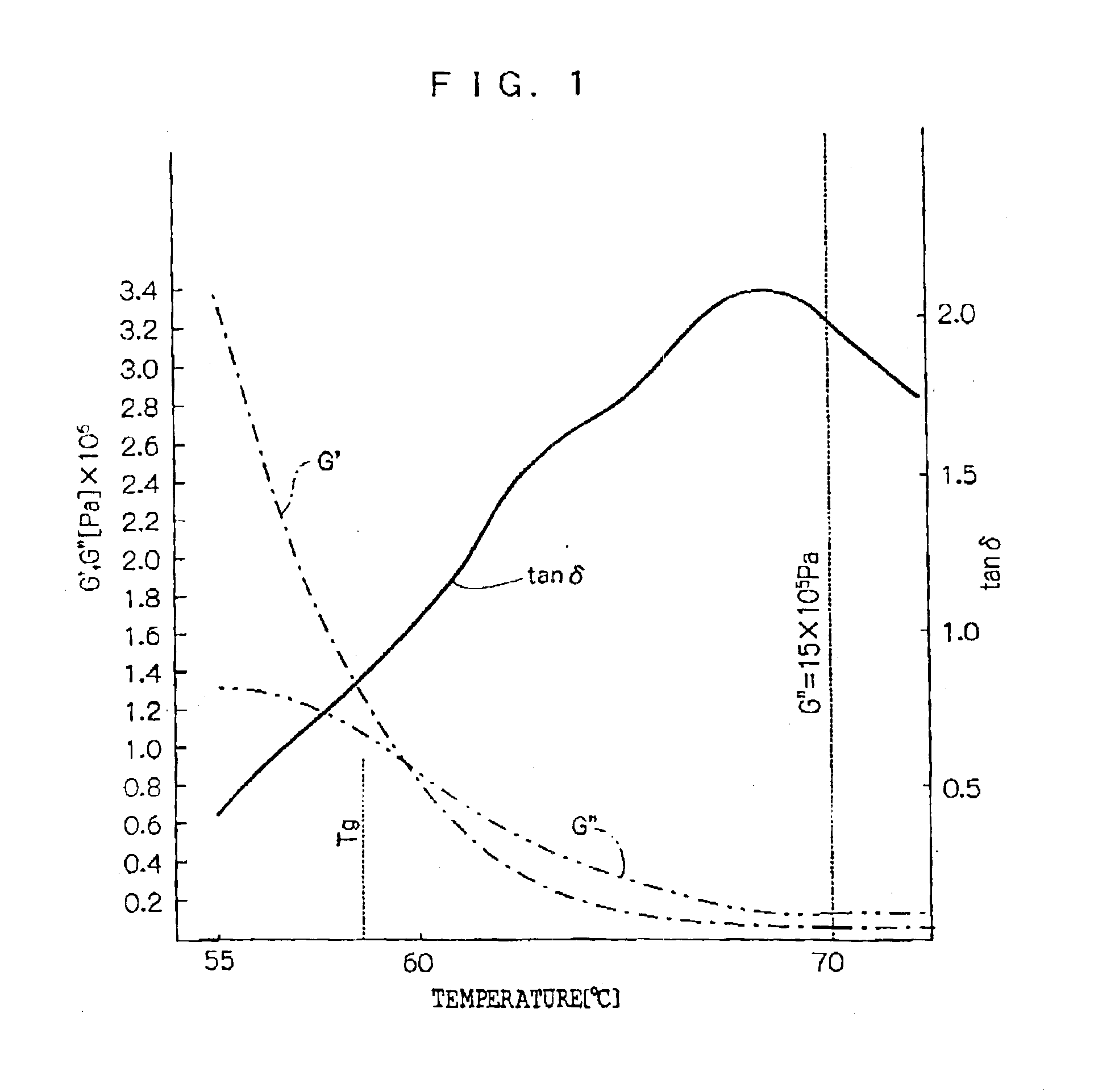Color toner, electrostatic latent image developer, image forming method, and image producing device
a technology of electrostatic latent images and toners, applied in the field of color toners, electrostatic latent image developers, image forming methods, image producing devices, etc., can solve the problems of deteriorating ohp image transparency, difficult to write on the image with a pen, and hardly realizing the gloss suitable for color image reproduction and excellent ohp imag
- Summary
- Abstract
- Description
- Claims
- Application Information
AI Technical Summary
Benefits of technology
Problems solved by technology
Method used
Image
Examples
example 1
Resin dispersion (1): 300 partsColorant dispersion (1): 200 partsReleasing agent dispersion (1): 110 partsRosin-modified maleic acid (softening point 139° C.): 60 parts(9.2% by mass)Cationic surfactant (Sanizol B50, Kao Corporation): 3 partsDeionized water: 500 parts
The above components are mixed and dispersed with a homogenizer (Ultratarax T50, produced by IKA Co., Ltd.) in a round stainless steel flask to prepare a mixed solution, and then heated to 50° C. under stirring on a heating oil bath and kept at 50° C. for 30 minutes to form aggregated particles. When a part of the resulting aggregated particles are observed under an optical microscope, the volume-average particle size of the aggregated particles is about 5.1 μm. 80 parts of the resin dispersion (1) are added gently to this aggregated fluid and heated at 50° C. for 30 minutes under stirring, to give aggregated particle dispersion A. When the resulting aggregated particle dispersion A is observed under an optical microscop...
example 2
Resin dispersion (2): 300 partsColorant dispersion (1): 200 partsReleasing agent dispersion (1): 110 partsStyrenemaleic acid (softening point 148° C.): 90 parts (12.8% by mass)Cationic surfactant (Sanizol B50, Kao Corporation): 3 partsDeionized water: 500 parts
The above components are mixed and dispersed with a homogenizer (Ultratarax T50, produced by IKA Co., Ltd.) in a round stainless steel flask, and then heated to 50° C. under stirring on a heating oil bath and kept at 54° C. for 60 minutes to form aggregated particles. When a part of the resulting aggregated particles are observed under an optical microscope, the volume-average particle size of the aggregated particles is about 5.9 μm. 100 parts of the resin dispersion (2) are added gently to this aggregated fluid and heated at 54° C. for 30 minutes under stirring, to give aggregated particle dispersion B. When the resulting aggregated particle dispersion B is observed under an optical microscope, the volume-average particle si...
example 3
Resin dispersion (1): 300 partsColorant dispersion (1): 200 partsReleasing agent dispersion (1): 110 partsStyrenemaleic acid (softening point 155° C.): 40 parts (6.1% by mass)Cationic surfactant (Sanizol B50, Kao Corporation): 3 partsDeionized water: 500 parts
The above components are mixed and dispersed with a homogenizer (Ultratarax T50, produced by IKA Co., Ltd.) in a round stainless steel flask, then heated to 50° C. under stirring on a heating oil bath and kept at 52° C. for 40 minutes to form aggregated particles. When a part of the resulting aggregated particles are observed under an optical microscope, the volume-average particle size of the aggregated particles is about 5.3 μm. 50 parts of the resin dispersion (1) are added gently to this aggregated fluid and heated at 52° C. for 30 minutes under stirring, to give aggregated particle dispersion C. When the resulting aggregated particle dispersion C is observed under an optical microscope, the volume-average particle size of ...
PUM
 Login to View More
Login to View More Abstract
Description
Claims
Application Information
 Login to View More
Login to View More - R&D
- Intellectual Property
- Life Sciences
- Materials
- Tech Scout
- Unparalleled Data Quality
- Higher Quality Content
- 60% Fewer Hallucinations
Browse by: Latest US Patents, China's latest patents, Technical Efficacy Thesaurus, Application Domain, Technology Topic, Popular Technical Reports.
© 2025 PatSnap. All rights reserved.Legal|Privacy policy|Modern Slavery Act Transparency Statement|Sitemap|About US| Contact US: help@patsnap.com


